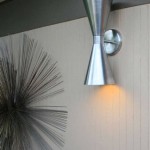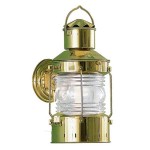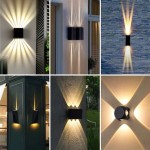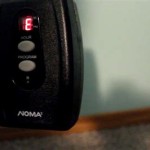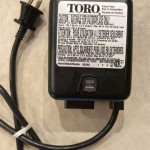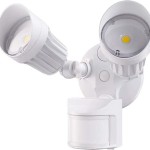Outdoor LED Downlights with Sensor
Outdoor lighting plays a crucial role in enhancing security, safety, and the aesthetic appeal of any property. Among the various outdoor lighting options available, LED downlights with integrated sensors offer a compelling combination of energy efficiency, convenience, and functionality.
LED technology has revolutionized the lighting industry, and its application in outdoor downlights is no exception. LEDs offer significant advantages over traditional lighting technologies like halogen or incandescent bulbs. They consume considerably less energy, resulting in lower electricity bills. Their extended lifespan also reduces the frequency of replacements, minimizing maintenance costs and effort.
The integration of sensors further enhances the practicality of outdoor LED downlights. These sensors automatically activate the lights when motion is detected within their range. This feature is particularly beneficial for security purposes, deterring potential intruders and illuminating pathways for residents and visitors. The automatic shut-off feature, triggered after a period of inactivity, ensures energy isn't wasted when the lights are not required.
Several types of sensors are commonly used in outdoor LED downlights. Passive infrared (PIR) sensors detect changes in infrared radiation emitted by objects within their field of view. Microwave sensors, on the other hand, emit microwave signals and detect changes in the reflected signals caused by movement. Dual-technology sensors combine both PIR and microwave technologies to improve accuracy and reduce false triggers. Photocell sensors, also known as dusk-to-dawn sensors, automatically activate the lights when ambient light levels fall below a certain threshold, typically at dusk, and deactivate them at dawn.
Choosing the right outdoor LED downlight with sensor involves considering various factors. The intended application plays a key role in determining the appropriate sensor type and light output. For security purposes, downlights with PIR or microwave sensors are ideal. For general pathway illumination, downlights with photocell sensors are a practical choice. The light output, measured in lumens, should be selected based on the area to be illuminated and the desired level of brightness.
The IP (Ingress Protection) rating is a crucial factor to consider when selecting outdoor lighting fixtures. This rating indicates the level of protection against the ingress of solid particles and liquids. Outdoor lighting fixtures should have a minimum IP rating of IP44, which signifies protection against splashing water. For locations exposed to more severe weather conditions, a higher IP rating, such as IP65 or IP67, offering protection against jets of water or temporary submersion, is recommended.
The color temperature of the light emitted by the LED downlight is another important consideration. Color temperature is measured in Kelvin (K). Lower color temperatures (around 2700K) produce a warm, yellowish light, while higher color temperatures (around 6500K) produce a cool, bluish-white light. The choice of color temperature depends on personal preference and the desired ambiance.
Installation of outdoor LED downlights with sensor requires careful planning and execution. The location of the downlights should be strategically chosen to maximize coverage and effectiveness. The wiring should be performed by a qualified electrician to ensure safety and compliance with local electrical codes. The mounting height and angle of the downlights should be adjusted to optimize the sensor's detection range and the light distribution.
Maintenance of outdoor LED downlights with sensor is generally minimal. Regular cleaning of the lens and sensor surface with a soft, dry cloth helps maintain optimal performance. Periodic checks for any signs of damage or malfunction are also recommended.
The advancements in LED technology and sensor integration have led to the development of smart outdoor lighting solutions. Smart outdoor LED downlights can be controlled remotely via smartphone apps, allowing users to adjust brightness, color temperature, and sensor settings. Some smart downlights can even be integrated with other smart home devices, creating a seamless and automated lighting experience.
The benefits of using outdoor LED downlights with sensor are numerous. They offer significant energy savings compared to traditional lighting options, reducing electricity consumption and environmental impact. The automatic activation and deactivation feature enhances convenience and security. The long lifespan of LEDs minimizes maintenance requirements. The variety of sensor types and light output options allows for customization to suit specific needs and preferences.
From enhancing security and safety to improving the aesthetic appeal of outdoor spaces, outdoor LED downlights with sensor provide a versatile and efficient lighting solution for a wide range of applications.

90mm Led Downlight 10w 15w White 3k 4k Motion Cla Lighting The

3 Pack Jeune Recessed Downlighter Pir Sensor Litecraft

Zone 9w Led Downlight Martec

90mm Lumascan Led Downlight With Sensor 9w White Cct 20244 05 Brillian The Lighting

Outdoor Led Downlights Collingwood H2 Pro Extreme Ip65 Co

90mm Lumascan Led Downlight With Sensor 9w White Cct 20244 05 Brillian The Lighting

Matrix 10w Led Pir Motion Sensor Dusk To Dawn Downlight Jd Lighting

Multi Fit Led Downlight With Pir Sensor Integral Downlights Co

Up And Down Pir Motion Sensor Wall Light For Outdoor Use

Eglo Rippa With Sensor 9w Led Pir Motion Activated Downlight Bitola Lighting And Fans
Related Posts
